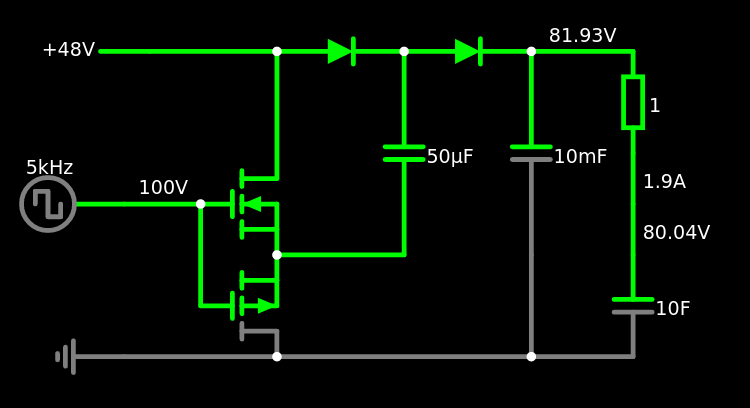canCan you explain the basic reason why boost converters seem to be more popular than voltage doubler circuits for load bearing output.?
I have built these 2two circuits in the simulator and they both basically achieve the same result of charging an 80v80 V battery from a 48v48 V supply.
I have built the boost converter on a circuit board and wasted many hours blowing up MOSFETs and making the circuit work on a real world-world circuit board with reasonable success.
I have also built a voltage doubler circuit that achieves producing the desired voltage output but only when not under any real load. yetYet in the simulator it works as well as the boost converter.
whatWhat are practicality / lifespan / cost reasons why boost converters are used for high current voltage doubling. is? Is there any point in me persevering with making my voltage doubler circuit work properly.?
It is all a learning curve really but it would be nice to be able to actually charge my 80v80 V battery at the end of it.
soSo far iI can charge the battery at 1 ampA with my home made boost converter as long as iI remember to unplug the input power before the output power, it blows the MOSFET if iI disconnect the output while its running, but iI think that's a microcontroller issue not responding to the rise in voltage fast enough when the load is disconnected and the PWM duty becomes to high, that iI should be able to overcome if iI think about it.



